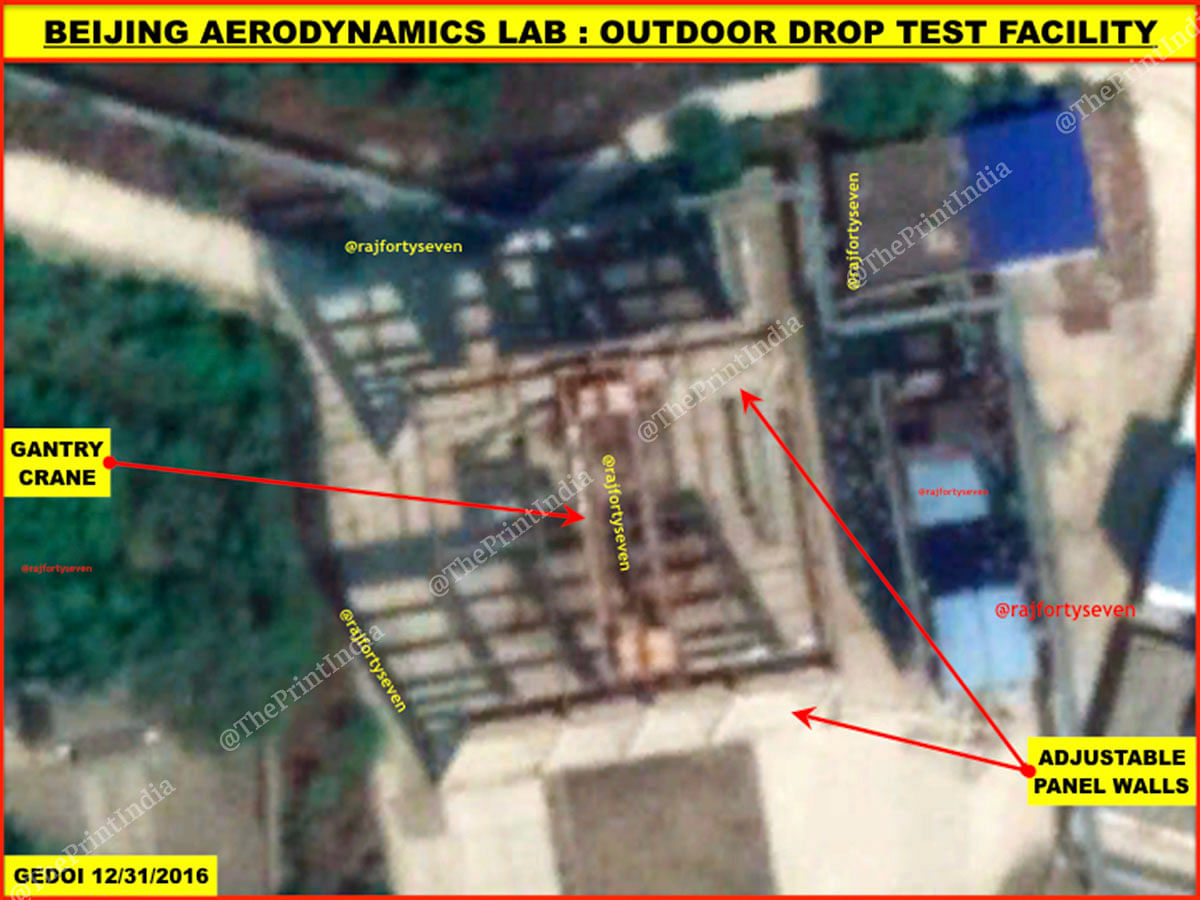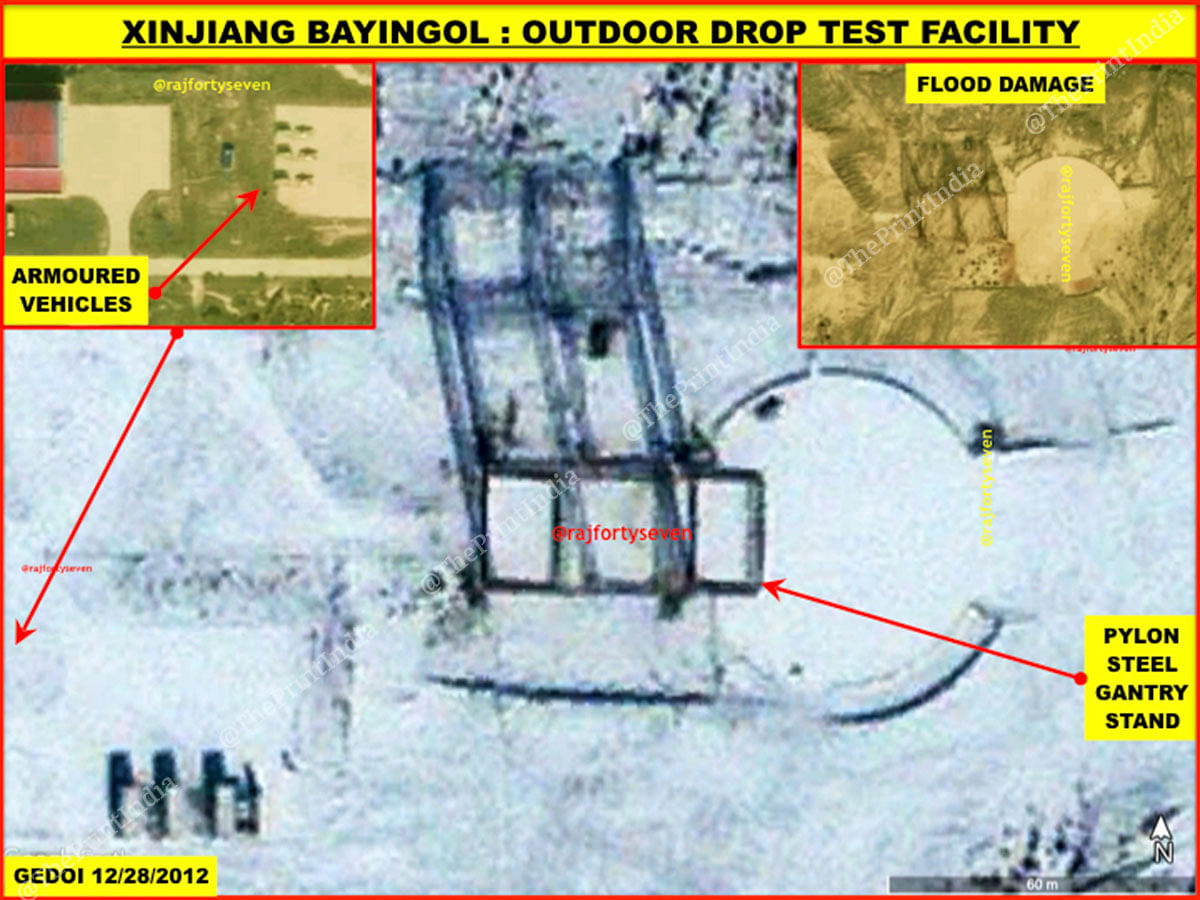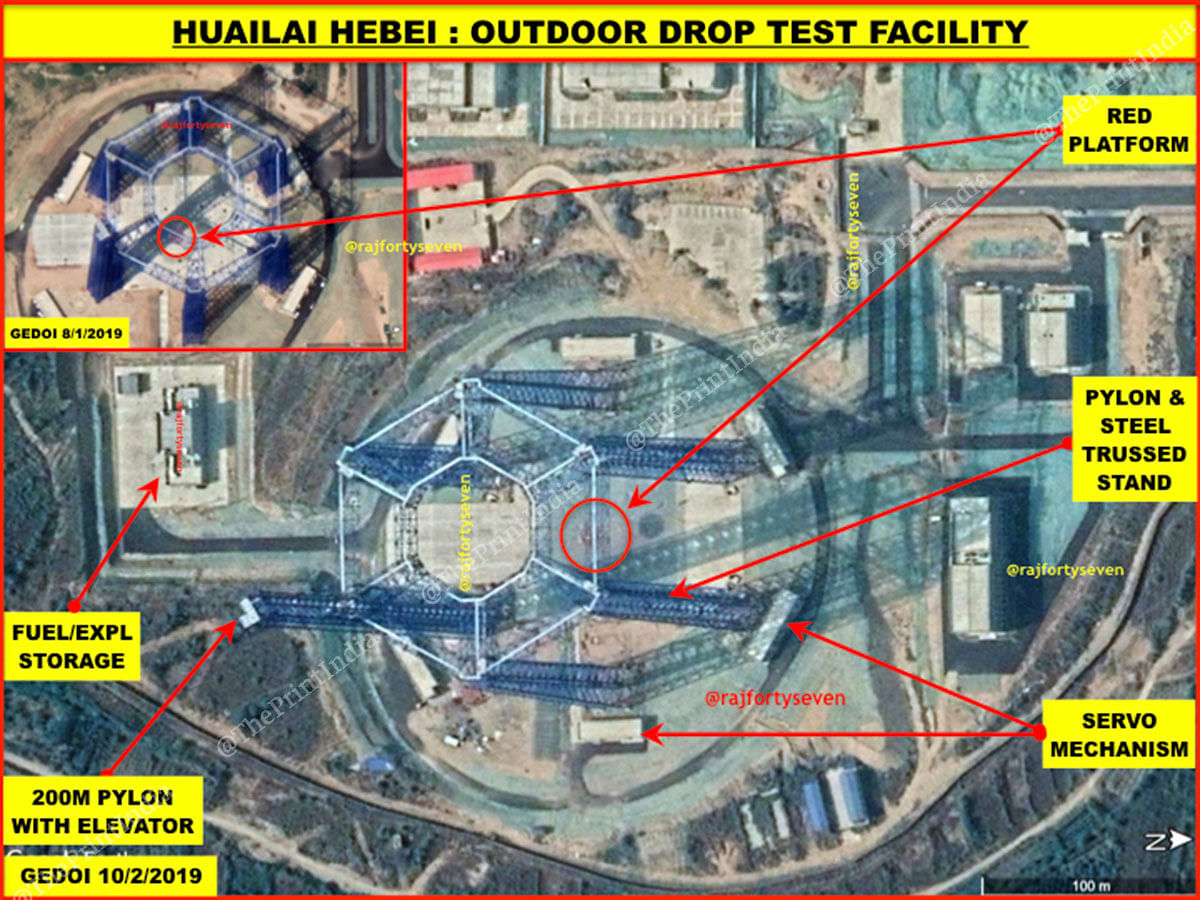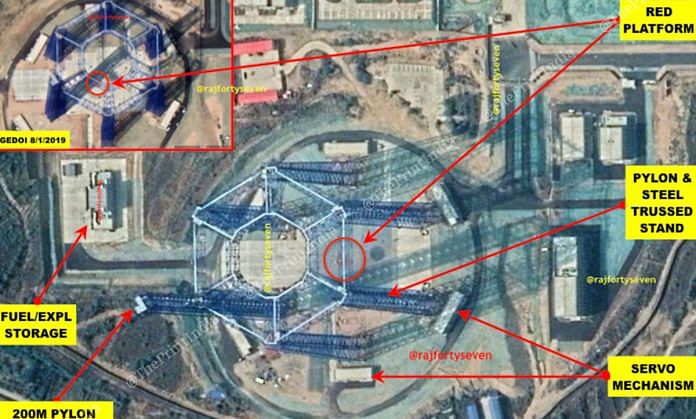New Delhi: Last month, China unveiled its plans to launch a Mars probe in the year 2020. The experiment to test the probe’s landing, held on 14 November, was widely showcased — ambassadors and diplomats from 19 countries, including France, Italy and Brazil, attended the event.
China’s National Space Administration or CNSA claimed that the Mars probe will complete orbiting, landing and roving in one mission in 2020, an unparalleled achievement.
Earlier this year, ThePrint had covered China’s mega plans to develop a human base on Mars by a private company, with full assistance of the China Astronaut Research and Training Centre.
ThePrint has identified the trial ground for the project, supposedly the largest in Asia, along with other test facilities, and uses satellite imagery to explore further.
The beginning
China has conducted many experiments to fulfil its space dreams earlier too, but the efforts until 2010 were temporary in nature with the help of large cranes.
The early outdoor drop test facilities were noticed on satellite imagery after 2010, and met the basic requirements of the People’s Liberation Army, its Rocket Force (PLARF), and space organisations.
There were three facilities observed — one inside the Aerodynamics Lab in Beijing, and another south of Beijing. Both these facilities are based on large gantry cranes.

The third facility was constructed in the arid environment of Xinjiang.
This facility, located east of Bayingol, is a simple one mainly used for testing the PLA’s armoured vehicles. It suffered damage from sudden flooding and was not repaired after that.

All three facilities are useful for drop tests from 20-50m drops.
Also read: Infrastructure in Tibet gets a big boost as China stepped up focus after Doklam face-off
Beijing facility
The eastern portion of the Beijing facility has a specialised pylon constructed for testing carrier rocket drops expected at space launch centres.

The Kuaizhou-1 rocket was also supposed to have been tested at this location before being put in service.
This facility also has a large water pond so that the rocket remains unharmed even if it plummets beyond the air mattresses placed for safety cushioning effect.
The retractable Nissen-type hut is used to store support material and the rocket itself during temporary halts at the facility.
CNSA facility
The facility that showcased the Mars lander experiment in November is located at Huailai, Hebei, 67 km north-west of Beijing.

The construction of the facility had begun in mid-2017, and continues even today.
The main drop test facility is hexagonal in shape, with an external perimeter of 390m and internal perimeter of 200m.
The five main pylons are raised to a height of 140m, while the sixth is almost 200m in height. All pylons have staircases reaching right to the top.
The sixth pylon also has an elevator in addition to the staircase. This one probably has a control structure on top for monitoring the tests.
A red platform for holding the Mars lander is placed in the centre, with steel cables attached from the pylons.
These cables create the exact resistance to simulate gravitational pull as it would encounter on Mars. This is achieved by controlling the cables from the red platform with six servo mechanisms located in 35m x 10m buildings at the bottom of each pylon.
Two of the support area buildings are possibly intended to store rocket fuel and explosives required for the simulation tests.
Also read: After Doklam, China boosts civil & military capability at Tibet’s Gonggar airport






